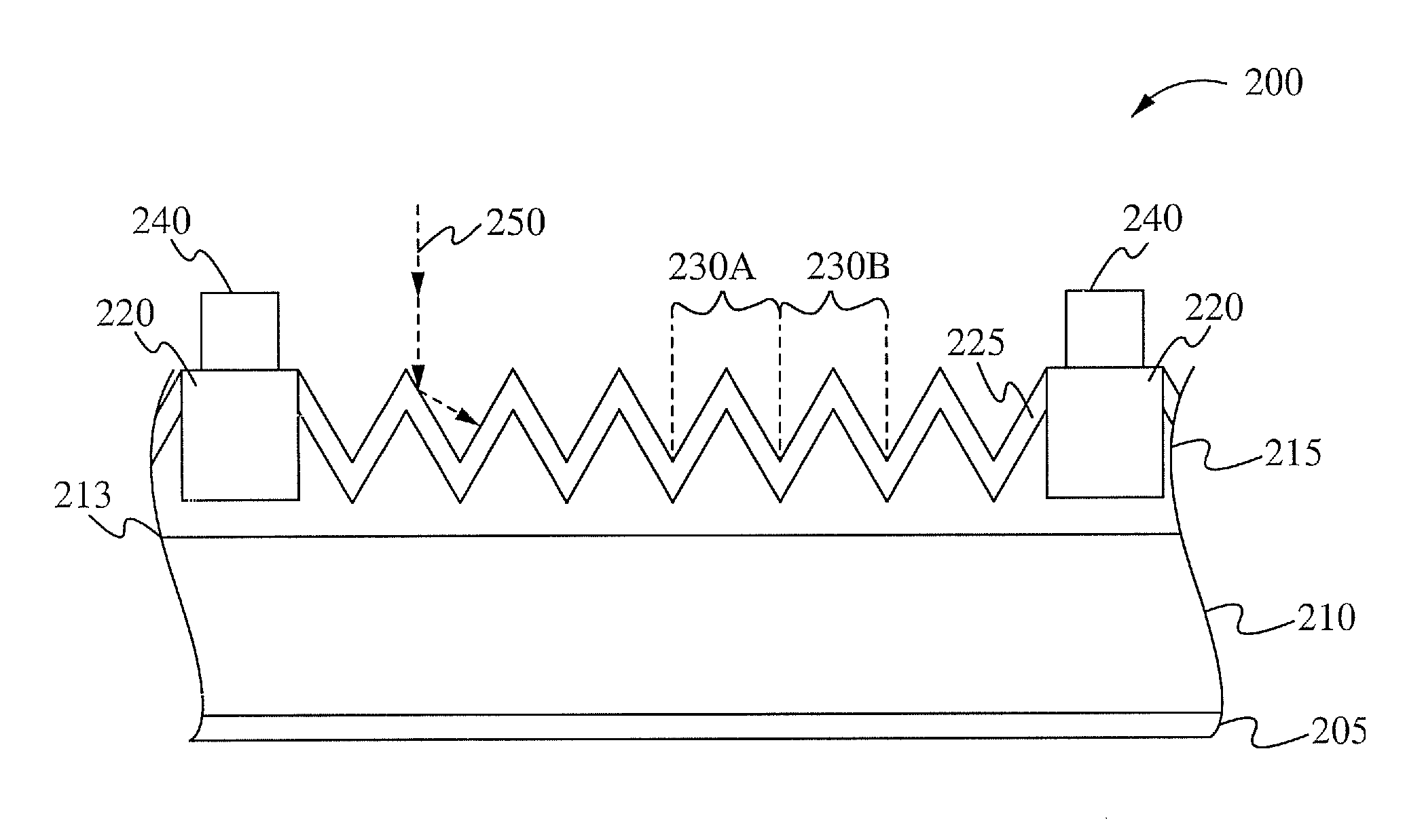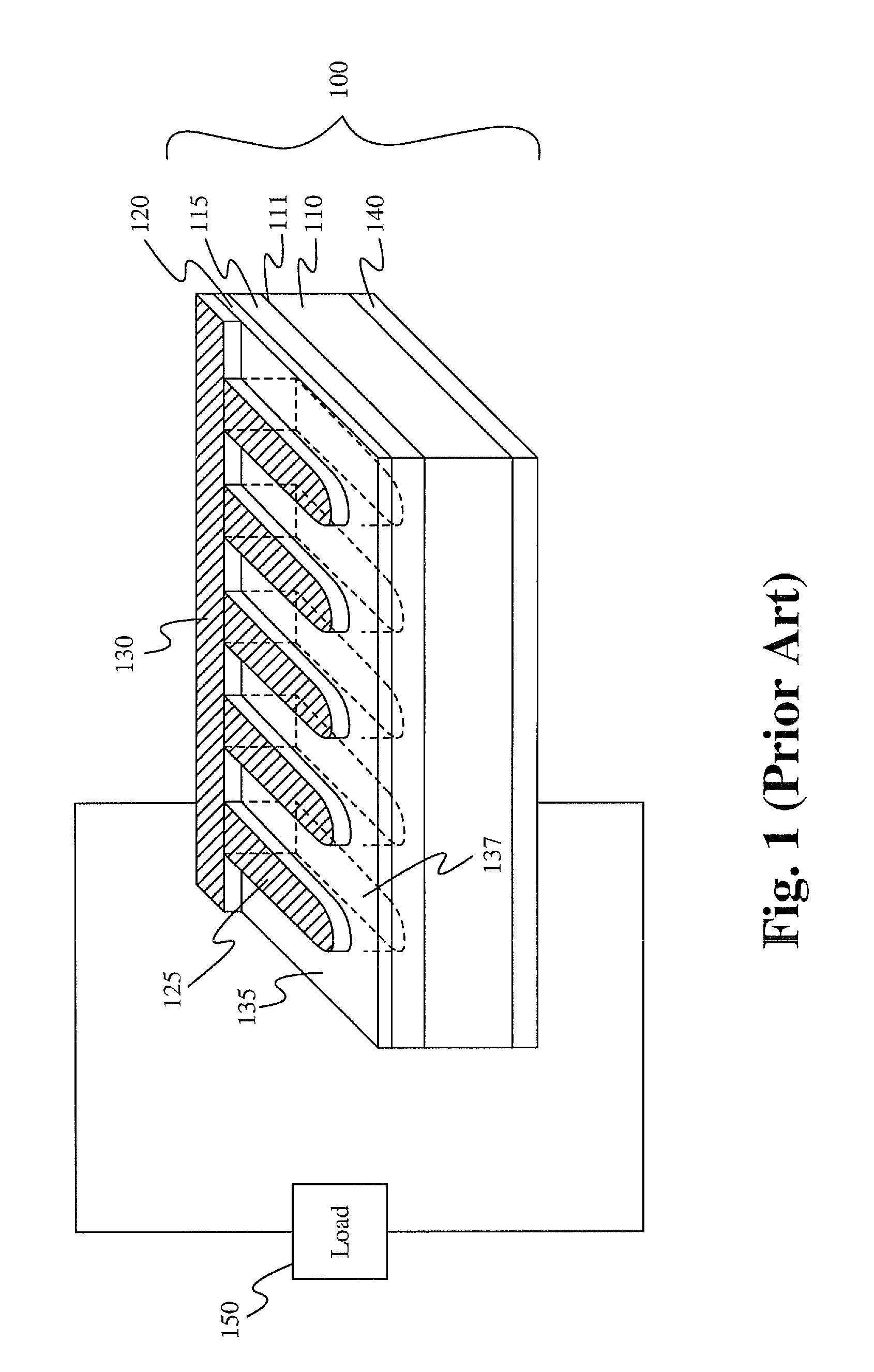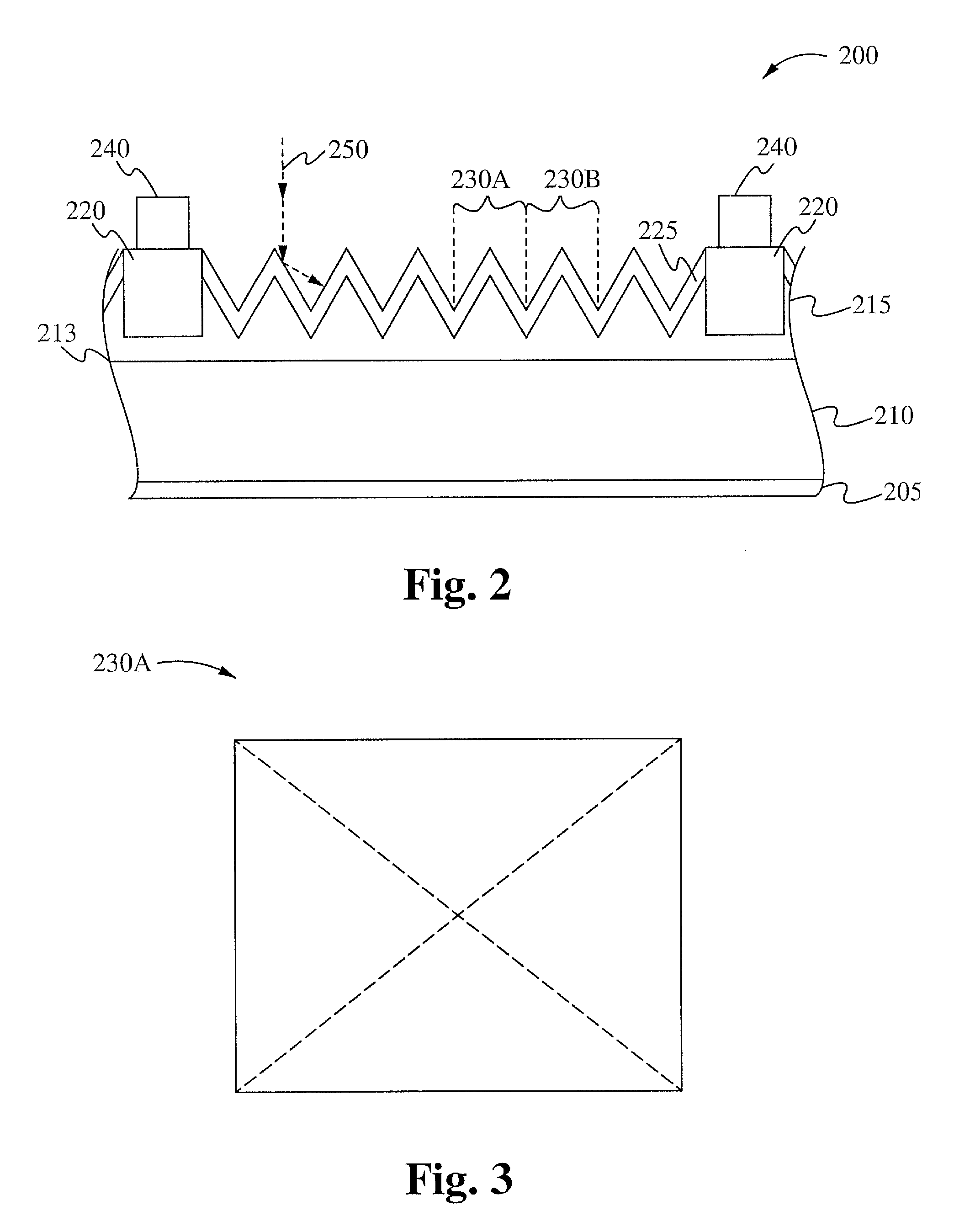Solar cell fabrication with faceting and ion implantation
a technology of solar cells and ion implantation, applied in the field of solar cell fabrication, can solve the problems of limited solar cell efficiency, excess un, and diffusion techniques used to form a conventional profile that are not optimal for the formation of selective doping regions
- Summary
- Abstract
- Description
- Claims
- Application Information
AI Technical Summary
Benefits of technology
Problems solved by technology
Method used
Image
Examples
Embodiment Construction
[0037]Embodiments of the present invention are directed to methods of fabricating a solar cell by heavily doping its selective emitter region and more lightly doping its photo-receptive regions. In some embodiments, the selective emitter region and the photo-receptive regions are formed in the same processing step.
[0038]For the best performance of a solar cell, the photo-receptive regions are lightly doped to provide a homogeneous high sheet resistance. A more heavily doped region increases the chance of electron-hole recombination and thus decreases the efficiency of converting photons into electrical power. In accordance with embodiments, the n-doped layer of the photo-receptive regions of the solar cell is lightly doped to provide a sheet resistance of between 80 and 160 ohms per square, preferably 100 ohms per square, or an ion doping of around 1E+19 cm−3. Preferably, the gridlines, over which the conductive finger contacts are formed, are more heavily doped to couple the genera...
PUM
 Login to View More
Login to View More Abstract
Description
Claims
Application Information
 Login to View More
Login to View More - R&D
- Intellectual Property
- Life Sciences
- Materials
- Tech Scout
- Unparalleled Data Quality
- Higher Quality Content
- 60% Fewer Hallucinations
Browse by: Latest US Patents, China's latest patents, Technical Efficacy Thesaurus, Application Domain, Technology Topic, Popular Technical Reports.
© 2025 PatSnap. All rights reserved.Legal|Privacy policy|Modern Slavery Act Transparency Statement|Sitemap|About US| Contact US: help@patsnap.com



